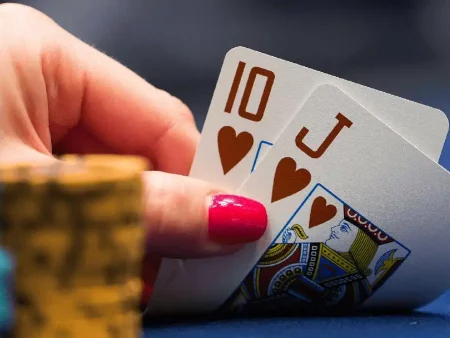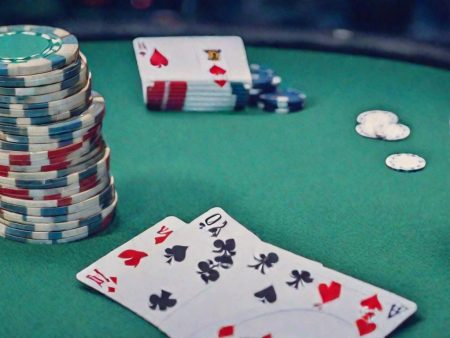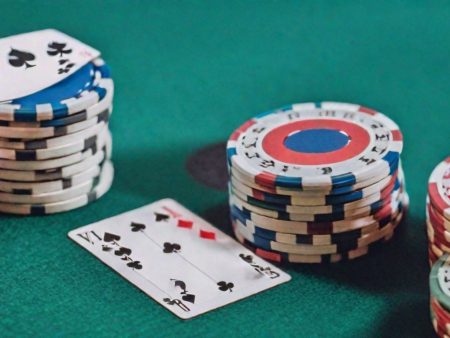In poker, a hand range refers to the set of cards or combinations that a player might use in a given situation. It’s important to note that in the past, the term “range” was often used to describe all possible cards a player might hold, rather than just the specific ones available at a given time.
A hand range has meaning at various stages of the poker hand: pre-flop, post-flop, and river. Understanding ranges helps players make better decisions and adopt a more strategic approach. However, it’s important to remember that ranges can vary significantly depending on the specific variant of poker being played, and the playstyle of each player. Players can build their own strategies by creating unique hand ranges that best suit their playing style. It’s crucial to understand that, as the hand progresses, ranges shift according to the situation at hand.
What is the Range Pre-flop?
Pre-flop refers to the phase where players only have their hole cards before any community cards are dealt. This is a critical moment in poker, as making the right decisions at this stage can heavily influence the rest of the game. Position at the table plays an important role in shaping a player’s hand range. For example, in late positions (such as on the button or cutoff), you can afford to play a wider range, as you can see the actions of other players before making your decision.
Read also: What does cap mean in poker.
Strong hands like pocket aces or high pairs should always be included in your range. However, it’s essential to vary your selection of hands so your game remains unpredictable. Adding speculative hands, such as suited connectors or medium-strength cards, can provide you with opportunities to create strong combinations later on. Also, consider the playing style of your opponents. If you’re up against aggressive players, it might be wise to include more premium hands in your range to be ready for potential raises. If your opponents are passive, you can widen your range to take advantage of their hesitation.
Your image at the table is important too. If you’re perceived as an aggressive player, your opponents will play more cautiously, which can give you an edge. If you’re known for being passive, you can exploit this by incorporating more bluffs into your strategy. Keep in mind that ranges differ between various poker variants. For example, in Texas Hold’em, the strategy will differ from that used in Omaha.
Post-flop Ranges: What to Consider?
Once the flop, turn, and river reveal community cards, your range is no longer determined solely by your hole cards, but also by the cards that are now on the table. Mastering post-flop ranges is a key element of your overall strategy because it’s at this stage that crucial decisions are made—whether to continue with your hand, raise, or even bluff. After the community cards are dealt, it’s important to evaluate how they affect your hand. Have you made a strong combination? Are there any opportunities for flush or straight draws? These are essential considerations that will help you determine your next move.
Position at the table remains relevant in post-flop play. Players in late positions still have an advantage because they can see what their opponents do before making their own decisions. This allows them to make more informed bets and raises. The playing style of your opponents continues to play a significant role. Understanding whether your opponent is aggressive or passive can help you make better choices about when to bet, raise, or even bluff.
Read also: What does a dealer mean in poker.
The size of the pot and bet sizes also matter. For example, if you have a strong hand, it’s beneficial to raise in order to build the pot. If your opponent holds a strong hand, it might be more prudent to play defensively and protect your stack. In cash games, you might want to adopt a more conservative approach to avoid significant losses, while in tournaments, a more aggressive strategy may be necessary to advance.
Practical Examples: How Does It Work in Practice?
Let’s look at a few examples to understand how these strategies play out.
Pre-flop:
- Let’s say Alex has A-A, K-K, Q-Q, and A-K in his hand. In this case, he would likely only play with the strongest hands, hoping to maximize the pot if he wins.
- If Alex is in a late position, his range might also include hands like 7-7, 8-8, A-10, J-10, and other medium-strength hands. He might be more willing to play with these hands, as he can take advantage of the actions of earlier players.
Post-flop:
- After the flop, Alex evaluates the community cards. If he has A-A or K-K and the board improves his hand, he might continue betting or raising.
- If Alex has 5-6 suited, he might continue the hand, hoping to hit a flush draw, and make bets to increase his chances of improving.
If the board shows cards like 2-3 of different suits, Alex might try to bluff, even though his hand is not strong. This move could confuse his opponents and prevent them from reading his hand accurately.
Tips for Beginners: How to Choose the Right Online Casino to Play Poker?
If you’re looking to start playing poker online, it’s crucial to select a reliable and licensed casino. This will protect you from fraud and ensure that your gaming experience is safe. Before you begin, always check if the casino holds a valid license and has positive reviews. Hand ranges in poker form the backbone of your strategy at different stages of the game. The ability to adapt your range based on the situation and your opponents’ styles will greatly improve your chances of success at the table. Constantly analyze your game, take into account the impact of your position and your opponents’ behavior, and remember: in poker, as in life, success goes to those who can adapt and make the right decisions. We regularly publish useful materials about casinos and gambling. Follow the casino lovers’ blog and never miss new articles!
FAQ: What does the cutoff mean in poker?
What does the cutoff mean in poker?
The cutoff is the seat located one position to the right of the dealer button at a poker table.
It is considered one of the most advantageous positions because players act late in the betting round.
Why is the cutoff position important?
The cutoff allows players to observe the actions of most opponents before deciding how to act.
This late position provides more opportunities for aggressive play and stealing blinds.
How does the cutoff differ from the button?
While both are late positions, the button is the most favorable because it acts last postflop.
The cutoff acts just before the button and often competes with it for control of the hand.
What strategies are effective from the cutoff position?
Players in the cutoff can play a wider range of hands, bluff more frequently, and apply pressure on opponents.
It’s an ideal spot to raise and steal blinds, especially when facing passive players.
How should players defend against cutoff aggression?
Defending against the cutoff involves tightening your range in the blinds and considering 3-bets to counter their steals.
Pay attention to the cutoff player’s tendencies to adapt your defense strategy effectively.
Can beginners benefit from understanding the cutoff?
Yes, mastering play from the cutoff helps beginners learn positional advantage and improve their overall game.
It teaches the importance of aggression and adapting ranges based on position.
How does the cutoff impact multi-table tournaments?
In tournaments, the cutoff is crucial for accumulating chips and applying pressure on shorter stacks.
Players often use this position to open-raise or 3-bet strategically, especially near the bubble.






